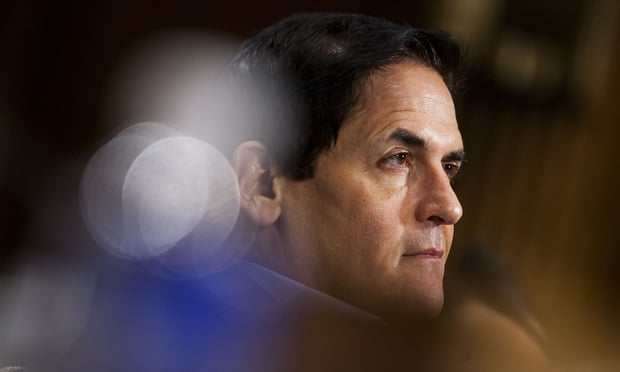In the ongoing quest to improve the quality of health care – or reduce the amount of total health care expenditures – employers all over the United States seem to have embraced the wellness program trend with open arms. These programs have transitioned from challenges to walk a 5K to sophisticated plans that aim to improve the health of employees with chronic diseases and improve employers' bottom lines.
However, there's still one big question that some experts insist hasn't yet been answered: Do wellness programs really work? And, maybe more importantly: How will an employer know if a wellness program is working?
Vik Khanna and Al Lewis, the brains behind the website theysaidwhat.net, are the foremost critics of the wellness industry in the country today.
Recommended For You
"I not only used to drink the Kool-Aid, but I used to mix up the recipe, too," says Lewis, who's sometimes referred to as the godfather of disease management. "Then I made the mistake of actually doing the math, and I outed myself as a fraud."
Khanna also spent most of his career in managed care and health policy consulting before he started exploring the wellness industry to see whether it was a better solution to the American health crisis than managed care programs.
"I've designed and run wellness programs for small employers and large employers," he says. "I think the only place my program had an impact was in a low-income housing community. And after less than a year working in a corporate environment, I concluded wellness programs just don't work. They can't possibly be producing the numbers people expect them to produce."
He says the spending reductions employers expect – and wellness programs promise – typically take place when workers have retired and become Medicare beneficiaries.
"You can't make the argument that you're going to save money today on something that won't happen for 25 to 30 years," he says.
"People already pay a big price for these habits," Lewis notes. "If it were possible to get somebody to lose weight or stop smoking by paying or fining that person, most of them would have already stopped. These conditions aren't things you can throw money at; all you're doing is essentially transferring money from hourly frontline workers who don't have time to do all these things you're requiring in the program and transferring that money to the corporate treasury."
Khanna says part of the problem is that employers aren't considering the full picture when it comes to employee health and wellness.
"Employers need to sit down and think very hard about what it is they're trying to do when they build a wellness program," he notes. "If you're really going to help people live better lives, you need to do things for and with your people. It's no different than how you treat your family; you wouldn't think you're producing happy, healthy children by dragging them to the pediatrician all the time. You do that by creating an environment in which they flourish."
One problem, Khanna says, is that instead of helping employers understand what their companies' health care expenditures look like – and then helping employers understand how those expenditures can be adjusted – there isn't a baseline claims analysis, which is a first and crucial step to any effective wellness program.
"The biggest opportunity to save money is to look at where you're spending money," Khanna explains. "Employers might be spending a lot of money on things like unnecessary labor inductions and inappropriate C-sections, but no wellness program is coming in and pointing out that they're getting hoodwinked by the labor and delivery industry – and that not only costs the employer a fortune, but it exposes women and children to unnecessary risks."
There are many other examples outside of labor and delivery; Lewis notes that all of the money spent in wellness programs to prevent heart attacks is reducing an already miniscule number, if it's having any effect at all.
"If you ask employers to give an example of a high-cost medical event they hope to avoid with a wellness program, they will almost invariably say, 'a heart attack,'" he says. "If you ask them how many heart attacks employees had last year, they won't know; if you ask them to guess, they'll probably say 3 percent or something close to that. The actual number is way under 1 percent, it's somewhere between one-tenth and one-twelfth of 1 percent. So they're doing all this work to possibly reduce a number that's already trivial by some much more trivial amount. And preventing a heart attack accounts for probably 95 percent of wellness programs."
"Employers should think long and hard about creating populations of people who are smarter about using the health care system," Khanna concludes, "and who make choices on a day-to-day basis that will make a difference."
Many industry experts agree wellness programs are not the be-all, end-all of health care cost savings, but some believe that even if a wellness program doesn't (or can't) shift health costs in a drastic way, there are still other benefits.
"Employers are looking to solve for different things," says Amy Gordon, a wellness benefits attorney with McDermott Will & Emery, "so there isn't one universal metric out there. Some employers are concerned about absenteeism whereas others are more concerned about rising medical costs and medical trends. Depending on what the employer is trying to accomplish with the wellness program, there are a number of different metrics that an employer may utilize to actually measure its ROI."
"Right now, the hardest thing for employers is to know what to do – where to aim," says Jeff O'Mara, the CEO of Healthentic. "Employers understand that many of these wellness programs aren't working as advertised; what they're doing right now is not saving money, and it's not working because it's not targeted. If you target it, you have to measure it, and the measurement needs to measure whether you've improved the condition you're targeting, not whether everyone is better than average and gets an 'A.'
"We're hearing about more and more wellness programs getting shut down in part or completely because there's no measurable ROI," O'Mara continues. "Wellness focused on disease management – conditions like lower back pain, diabetes or high blood pressure – can work to save costs and improve health. But the things that people commonly associate with a wellness program – like weight loss, stress management, smoking cessation, nutrition and fitness – those do not bend the health care cost curve.
"Companies are in this conundrum because the data they get on the health of their employee population and how that relates to their health care spending isn't good data," he adds. "Faced with very little insight into what's going on, employers are trying different things that are well-intentioned. Most turn to wellness because they believe that healthier employees will save them money, and they hope the wellness plan will give them a happier, more productive workplace.
"But employers can't always see what's going on with the health and wellness of their employee populations, so they launch general programs – and if you launch a general program and then try to track specific results, it doesn't work. Weight loss and completion rates sound great, but they're not really actionable."
O'Mara says there is one vital component of employee wellness that employers need to understand.
"The No.1 thing companies need to do is understand what their top risks and conditions are, and which employees have them," he explains. "Then, they can design programs to target those risk conditions. Consider that, generally, in a population of 10,000 people, you might have 500 with high blood pressure who aren't taking medication. If you run a campaign for adherence for that entire population, it'll be a general campaign, and it won't be very effective. But if you run a campaign specific to the people who aren't adherent, you can tailor it to them and get a better result."
And he notes that employers are increasingly looking to brokers to answer their wellness questions.
"Brokers are saddled with the same lack of insight and data that employers face," he points out. "If you can see what's happening in your population, then you can run the programs that focus on the conditions that matter."
© 2025 ALM Global, LLC, All Rights Reserved. Request academic re-use from www.copyright.com. All other uses, submit a request to [email protected]. For more information visit Asset & Logo Licensing.







